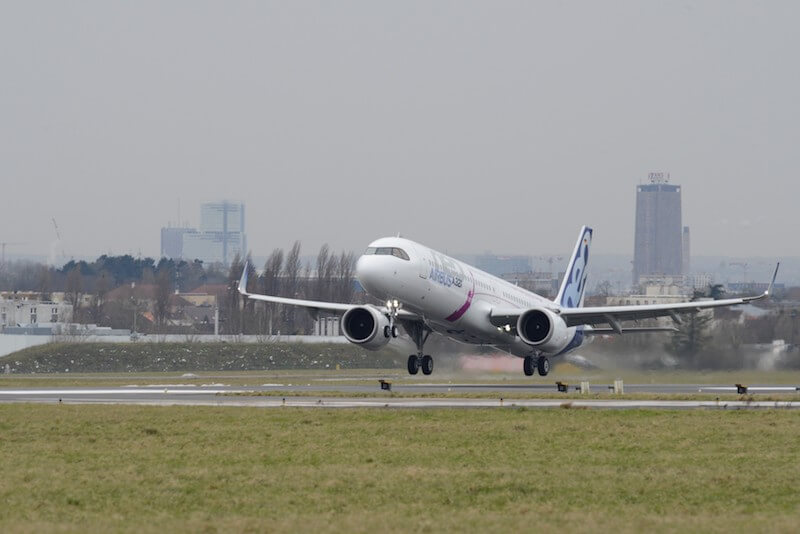Improved aerodynamics and efficient jet engines open new horizons for airlines and passengers
Paris, February 14, 2018: Airbus’ latest long range airliner, the A321LR, marked a new milestone with a Paris-to-New York nonstop flight. The aircraft is powered by two CFM International LEAP-1A engines. The intercontinental flight is part of nearly 100 hours of flight tests in advance of the jetliner’s airworthiness certification, expected in the second quarter of 2018.
The LR designation is for ‘long range’ and with good reason: the A321LR has the longest range of any single-aisle commercial aircraft today, able to fly 7,400 kilometers nonstop.
Its ‘long legs’ are signified by the No. 1 A321LR’s livery featuring the Eiffel Tower and Statue of Liberty – a representation of the Paris/New York route flown yesterday from Le Bourget Airport near the French capital to the New York region’s John F. Kennedy International Airport. The aircraft also is well suited for intra-regional airline segments in Asia, the United States and other markets.
The A321LR’s unrivalled efficiency – driven by aerodynamic improvements and state-of-the-art fuel-efficient turbofan jet engines – has established its popularity among airlines, with Airbus already notching more than 100 orders for the aircraft; the first customer delivery is expected in late 2018. The interior of the A321LR will be passenger-pleasing as well, with unmatched comfort from the widest single-aisle cabin in the sky, comfortable seats, extra-large luggage bins and the latest in-flight-entertainment technology.
Operators can outfit the A321LR in state-of-the-art two-class configurations with full-flat seats for true long-haul comfort, or in a single-class layout capable of accommodating up to 240 passengers.
The A321LR is the next evolutionary step of Airbus’ twin-engine A321neo that has captured more than an 80 percent share in its middle-of-the-market category. Airbus expects the A321LR to continue this trend, as it offers a thoroughly modern replacement for the large number of ageing narrowbody and widebody aircraft facing retirement in the coming years.

Source: Airbus
